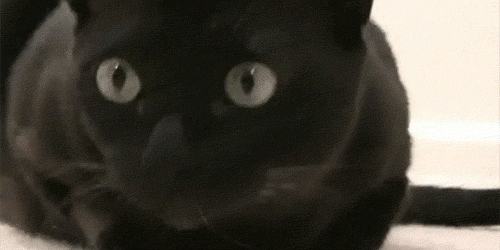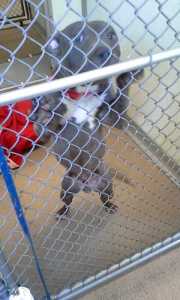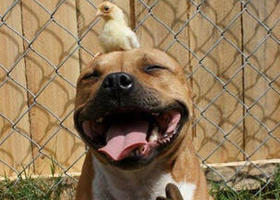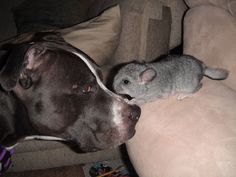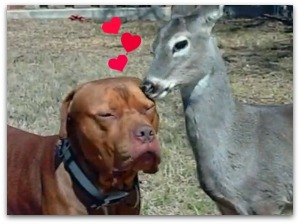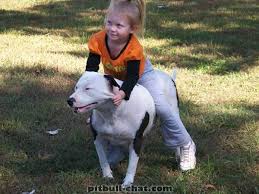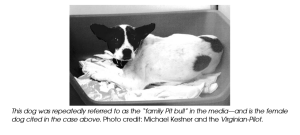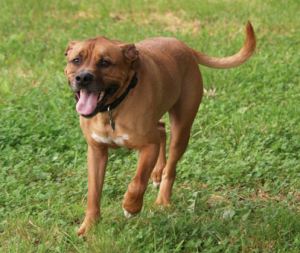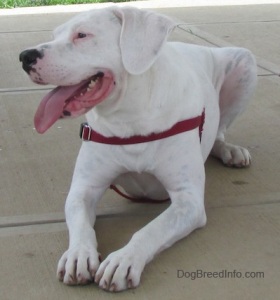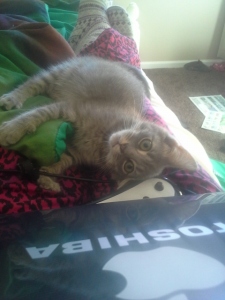I wanted to share this story for a long time, but I always felt that it was out of the blue. Now, with Pittie month underway and all this talk about statistics and numbers, I feel as though this is more relevant than ever before. While I was always aware of the pit bull issue since I started this job, it wasn’t until this event that I experienced the ignorance often illustrated among those that end up being responsible for the ‘pit bull’ image.
I’m sure I’ve mentioned it before, but I’ll say it again for the sake of this upcoming story; I am an employee at an animal shelter. I take care of the animals, keep things running smoothly, and adopt them out to (hopefully) fitting homes.
I was out in a fenced in area with one potential adopter with an American Bulldog named James. James supposedly came from a breeder, as their previous adopters had said, and he did look like an American Bulldog. But because he was surrendered with no kennel club papers proving his heritage, he was labeled as an American Bulldog mix. James still acted like an American Bulldog, however; Goofy, happy, playful, and soaked up attention. James liked to play a game I called ‘fake-out’, where he would run towards me at top speeds, and before hitting into me, he would swerve or stop at the last minute. Well, one time he played ‘fake-out’ and it wasn’t really a fake – he ran head-on into my kneecap, which actually threw me into the air and I fell face-first on the ground! James was ecstatic that I was closer to his level, and ran over to me and covered me in slobbery dog kisses. I was not so enthused, though. It took me a little while to get back on my feet, and once I did I realized I needed to see a doctor. Luckily, despite that display of stupidity, the potential adopter I was showing James to actually went through with the adoption process. I’m assuming they loved James more after seeing him wipe out a little girl claiming to be a dog councilor!
In the following week I went to see a doctor about my leg. It had healed and felt much better since then, but given the size and speed of the dog, and the straight-on collision, I wanted to make sure no real damage was done. Before I could see the doctor, a nice nurse had to ask me some questions due to the nature of the incident.
After I had told her the accident that happened while I was at work, she scribbled some notes on her clip board and asked “What kind of dog was involved?” I told her he was an American Bulldog, and she followed up with “So, that a pit bull, right?”
“No, that’s an American Bulldog.”
It seemed to me she had already answered her own question, “Yes, but that is a pit bull.”
I was speechless, and I didn’t really feel like arguing on that point when all I wanted to do was get my results and head back home. But being naturally nosy, I had to peak at what was on that clipboard, and why she needed so much information on this dog. I peered over, and saw ‘Attack’ printed on the forum she was filling out.
I was aghast. I tried to politely hide my unease and anger, but simply ended up fidgeting awkwardly instead. Finally, in a moment of silence as she was reviewing her notes, I quietly blurted out “It wasn’t an attack, he didn’t mean it.”
She must have noticed my peering eyes before, as she wasn’t puzzled by my queer outburst in the slightest, “A lot of dogs attack and don’t mean it. A lot of dogs think it’s all in good fun. And that’s the danger in it.”
At this point my blood was boiling, and I stated, maybe a little louder than what should be allowed in a doctor’s office, “But I wasn’t bit!”
She didn’t skip a beat, though; “But you are injured, aren’t you?” It appeared she was a veteran at these debates.
I let out a sigh of defeat. I know when it’s time to back down from a fight, especially one I was confident I wasn’t about to win. James and I could potentially be a statistic now, filling up bar graphs and pie charts in dog attacks or pit bull attacks, even though it was rather minor and x-rays showed no damage to my leg or knee. And that’s how James and I became a number.

 There’s never a break from homeless animals, as is evident with my newest batch of kittens. These kittens are on quarantine for Distemper, a fatal and contagious disease among cats. The shelter had two options because they could not risk Distemper infecting all the un-vaccinated cats they get in; either euthanize all the possible distemper kittens, or find an appropriate foster home to quarantine them in. I chose the latter, obviously, as I couldn’t let the former action take place when I had a (somewhat!) empty home.
There’s never a break from homeless animals, as is evident with my newest batch of kittens. These kittens are on quarantine for Distemper, a fatal and contagious disease among cats. The shelter had two options because they could not risk Distemper infecting all the un-vaccinated cats they get in; either euthanize all the possible distemper kittens, or find an appropriate foster home to quarantine them in. I chose the latter, obviously, as I couldn’t let the former action take place when I had a (somewhat!) empty home.